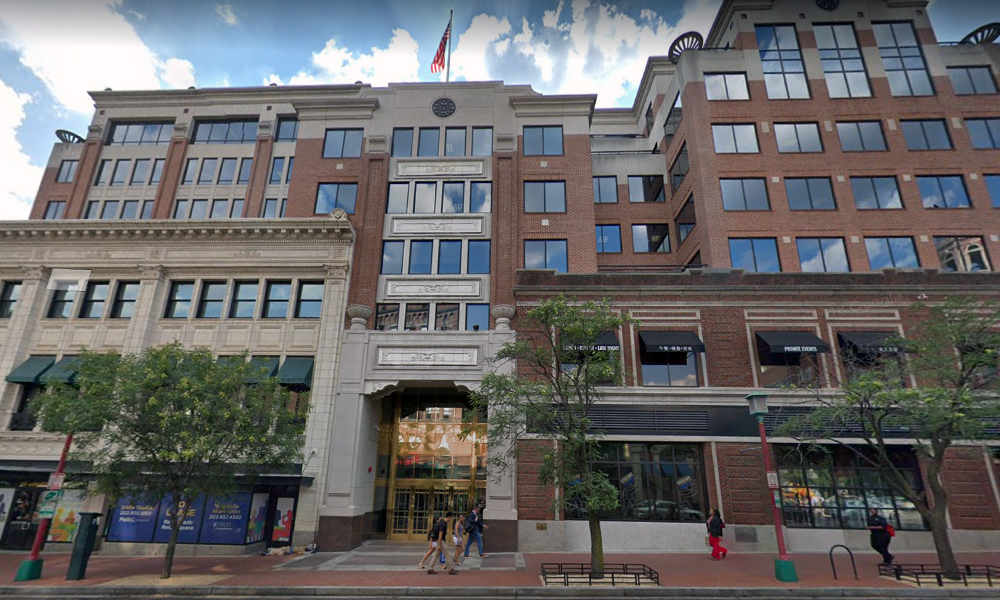![]() Two months ago today, on Dec. 21, 2018, the Juvenile Justice Reform Act was signed into law. The bill served as the first update to the Juvenile Justice and Delinquency Prevention Act (JJDPA) in 16 years — a period long enough for millions of young people to age into and out of a dated juvenile justice system that had seen no major federal changes since 2002.
Two months ago today, on Dec. 21, 2018, the Juvenile Justice Reform Act was signed into law. The bill served as the first update to the Juvenile Justice and Delinquency Prevention Act (JJDPA) in 16 years — a period long enough for millions of young people to age into and out of a dated juvenile justice system that had seen no major federal changes since 2002.

Naomi Smoot
December’s long-awaited and much-needed reauthorization received unanimous approval from the House and Senate during a time when agreement in Washington can seem hard to come by on most things. The legislation was also supported by more than 100 state and national organizations and system stakeholders ranging from the R Street Institute and the American Civil Liberties Union, to the National Parent Teachers Association, the American Bar Association and law enforcement officials. Members of the National Council of Juvenile and Family Court Judges, the Campaign for Youth Justice and the Coalition for the Juvenile Justice (CJJ) — which represents states across the country — all worked tirelessly alongside one another in support of the Act.

Marcy Mistrett
This broad support is in large part because of the Act’s crucial importance. “While much has been accomplished, more needs to be done in order for us to sustain and fully accomplish our goals — based on research, empirically-supported practice and a growing body of knowledge in the field,” CJJ’s Council of State Advisory Groups noted more than a decade ago in a 2008 policy platform urging JJDPA reauthorization.
The Act as updated in 2018 brings federal policy in line with what research has proven in recent decades, and helps ensure that young people receive a fair and equitable chance at healthy and successful lives.
How to comply unclear yet
The 100-page bill includes a broad range of changes. The longstanding disproportionate minority contact requirement, for example, has been replaced with a new Racial and Ethnic Disparities requirement, which calls on states to monitor and address disparities within their system related to both race and, for the first time, ethnicity as well. This change is critical to addressing the overrepresentation of youth of color that exists across the country, sometimes with life or death consequences for our young people.
The Act also ensures that young people awaiting trial on criminal charges can no longer be housed in adult facilities, thus ensuring that all young people are moved from dangerous adult jails and lockups into more age-appropriate settings. It requires states to create plans to address and end the use of restraints on known pregnant youth during labor and postpartum recovery. Further, it ensures that reentry planning is done to address a young person’s living and educational needs upon return to their community, and it provides teeth to the Deinstitutionalization of Status Offender core requirement.
There is much work to be done as a result of the Act’s reauthorization and, as is often the case, limited resources with which to accomplish it. Since the Act was last reauthorized, federal funding to states has been slashed nearly in half, and advocates have faced a battle each year as House appropriators tried time and again to zero out JJDPA programs entirely.
It is critical that the states receive clear guidance on what is expected of them for compliance. This need is much unchanged from 2008, when 42 states unanimously called on the Office of Juvenile Justice and Delinquency Prevention to provide “intensive technical assistance to the States to help them achieve compliance with the core protections of the JJDPA; and … intensive training and technical assistance to assist in development and replication of empirically supported/evidence-based, emerging and promising juvenile justice and delinquency prevention practices.” This need is perhaps more pronounced now than ever before.
This work is not insurmountable though. With a strong partnership between the federal government and the states, implementation of the Act can successfully ensure that young people across the country all have access to a more equitable justice system. To make implementation successful in fiscal year 2020, when the Act begins to take effect, states need adequate and effective training and technical support, something that Congress recognized in the reauthorization, providing that 2 percent of all funding should go to technical assistance, and that half of all funds withheld due to noncompliance also go to supporting struggling states.
Naomi Smoot is the executive director of the Coalition for Juvenile Justice where she works, among other things, to improve youth collaboration among state advisory groups. She is co-chair of the Act-4-Juvenile Justice Coalition.
Marcy Mistrett is CEO of the Campaign for Youth Justice, a national advocacy organization, and co-chair of the Act-4-Juvenile Justice Coalition.

Great article, but just a word of advice from a retired English teacher, please be careful when using the term ‘unanimous’. In the pull quote below, you can see how 42 states, 42/50, is not unanimous, but combining a number less that the total with the word ‘unanimous’ has a connotative effect to emotionally pull the reader to think all 50 states called on the office for assistance, implying none was offered, when in fact, 8 states did not sign on to that call for whatever reason. Thank you for your attention to this small matter.
“This need is much unchanged from 2008, when 42 states unanimously called on the Office of Juvenile Justice and Delinquency Prevention to provide “intensive technical assistance to the States to help them achieve compliance with the core protections of the JJDPA; and … intensive training and technical assistance to assist in development and replication of empirically supported/evidence-based, emerging and promising juvenile justice and delinquency prevention practices.””